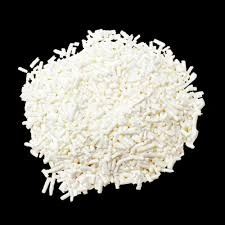
Soy-Based Emulsifiers and Their Role in Food Industry Applications
Understanding Soy Emulsifiers The Unsung Heroes of Food Technology
In the ever-evolving world of food technology, soy emulsifiers have emerged as a critical component that enhances food stability, texture, and shelf life. Derived from soybeans, these powerful agents play an indispensable role in various food products, helping to ensure consistency and quality while meeting the growing demands of consumers for healthier and more sustainable options.
What Are Soy Emulsifiers?
Emulsifiers are substances that allow two immiscible liquids—such as oil and water—to mix and remain stable when combined. Soy emulsifiers, specifically, are extracted from soybeans and are primarily composed of phospholipids, which possess both hydrophilic (water-attracting) and hydrophobic (water-repelling) properties. This unique molecular structure enables soy emulsifiers to act as a bridge between water and fat molecules in food products, thus improving the texture and stability of various formulations.
The Role of Soy Emulsifiers in Food Products
Soy emulsifiers are widely used across a variety of food products, including baked goods, dressings, sauces, dairy products, and chocolate
. In baked goods, for instance, they help maintain moisture, improve dough handling, and extend shelf life, resulting in softer, fresher products. In salad dressings and sauces, soy emulsifiers ensure that oil and vinegar mix seamlessly, preventing separation and enhancing the overall sensory experience for consumers.In the dairy sector, soy emulsifiers assist in making products like margarine and cream cheese by improving spreadability and texture. Similarly, in the chocolate industry, they help achieve a smooth and glossy finish while reducing fat content, making chocolate products more appealing to health-conscious consumers.
soy emulsifier

Health Benefits and Nutritional Aspects
Considered a more sustainable option in comparison to other emulsifiers derived from animal sources, soy emulsifiers also offer some nutritional benefits. Soybeans are a source of protein, fiber, and essential fatty acids, making soy emulsifiers a functional ingredient that aligns with consumer trends towards plant-based and health-oriented diets.
Moreover, as the global population becomes increasingly health-conscious, the demand for natural and clean-label ingredients has surged. Soy emulsifiers are often perceived as a more natural alternative to synthetic emulsifiers, appealing to those who prefer recognizable ingredients in their food.
Environmental Impact
Soybeans are one of the most sustainable crops, requiring less water and land compared to many alternatives. The cultivation of soy for emulsifiers contributes to environmental sustainability by supporting agricultural practices that minimize carbon footprints. Additionally, many companies are committing to responsible sourcing of soybeans, ensuring that their products do not contribute to deforestation or other ecological concerns.
Conclusion
In summary, soy emulsifiers are an essential yet often overlooked component of food technology. Their ability to marry oil and water enhances the quality and stability of a myriad of food products, making them vital for manufacturers seeking to meet consumer demands for taste, texture, and nutrition. As the industry continues to innovate, the role of soy emulsifiers is likely to grow, especially as sustainability and health considerations remain at the forefront of food production. By embracing soy emulsifiers, both food manufacturers and consumers can foster a healthier and more sustainable future in the culinary world.
-
Understanding Synthetic Rubber OptionsNewsApr.27,2025
-
Trichloroisocyanuric Acid: Essential for Clean and Safe WaterNewsApr.27,2025
-
Sodium Dichloroisocyanurate: Key to Safe Water TreatmentNewsApr.27,2025
-
Sodium Acid Pyrophosphate: Essential in Modern Food ProcessingNewsApr.27,2025
-
Essential Water Treatment ChemicalsNewsApr.27,2025
-
Denatured Alcohol and Its Industrial UsesNewsApr.27,2025
-
The Versatile Uses of Sodium BicarbonateNewsApr.24,2025
Hebei Tenger Chemical Technology Co., Ltd. focuses on the chemical industry and is committed to the export service of chemical raw materials.
-

view more DiethanolisopropanolamineIn the ever-growing field of chemical solutions, diethanolisopropanolamine (DEIPA) stands out as a versatile and important compound. Due to its unique chemical structure and properties, DEIPA is of interest to various industries including construction, personal care, and agriculture. -

view more TriisopropanolamineTriisopropanolamine (TIPA) alkanol amine substance, is a kind of alcohol amine compound with amino and alcohol hydroxyl, and because of its molecules contains both amino and hydroxyl. -

view more Tetramethyl Thiuram DisulfideTetramethyl thiuram disulfide, also known as TMTD, is a white to light-yellow powder with a distinct sulfur-like odor. It is soluble in organic solvents such as benzene, acetone, and ethyl acetate, making it highly versatile for use in different formulations. TMTD is known for its excellent vulcanization acceleration properties, which makes it a key ingredient in the production of rubber products. Additionally, it acts as an effective fungicide and bactericide, making it valuable in agricultural applications. Its high purity and stability ensure consistent performance, making it a preferred choice for manufacturers across various industries.











